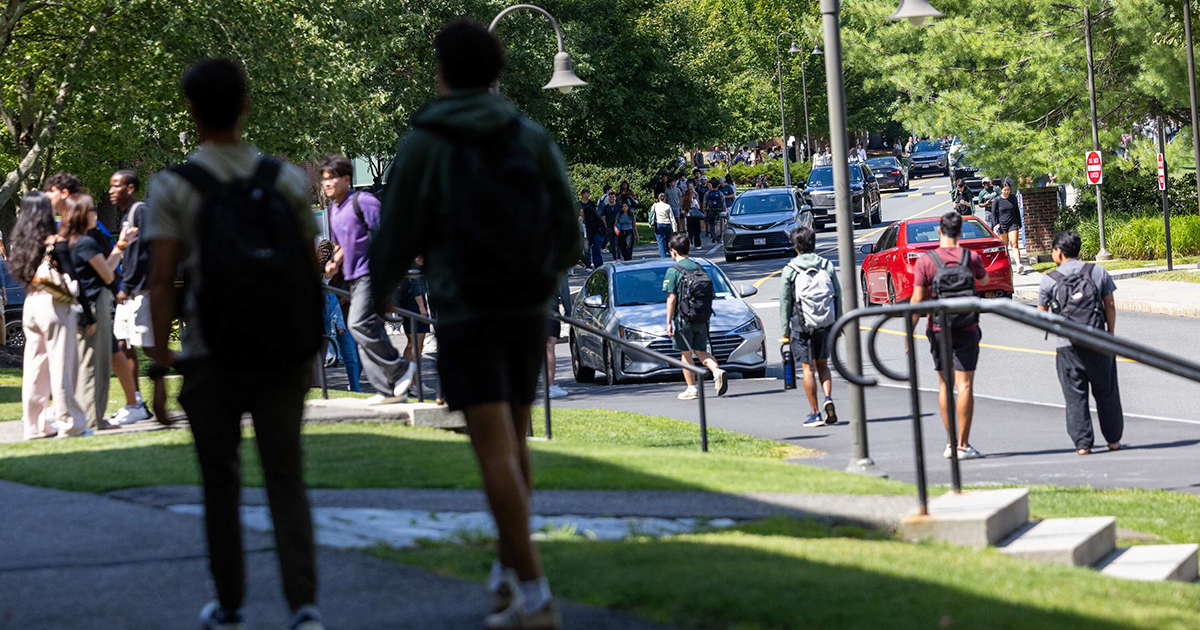Leading the Way: Babson Wellness Chief Elevates Well-Being Priorities in Higher Education

Amid an ongoing mental health crisis and dipping enrollment, Babson College’s Ryan Travia believes colleges and universities are facing “a crossroads moment,” which became the inspiration for his new book, Well-Being Leadership in Higher Education.
“The toll that the pandemic took on the emotional well-being of so many individuals—most especially our youth—has only served to exacerbate the feelings of anxiety, isolationism, and the overall lack of connection and belonging with which many of our young people grapple,” said Travia, the associate vice president for student success at Babson, who co-authored the book with Thaddeus Mantaro, the dean of student health and wellness at Dallas College.
“The good news is that college health was thrust into the spotlight in ways that it had never previously experienced. As a result, we have been able to marshal new and additional resources to support the mental health and overall well-being of our students, staff, and faculty,” Travia said.

The book, which is due out in January and includes contributions from student affairs leaders, clinicians, wellness officers, and faculty nationwide, blends research, theory, and practice into a blueprint for campus leadership to embed well-being throughout campus.
Travia believes it is the first of its kind to focus squarely on the intersection of leadership and well-being—an area underserved in academic literature.
“There are scores of books and academic articles written about leadership,” Travia explained. “And certainly, there’s a lot that’s been said about well-being. But very little exists at the intersection of those two areas. It seemed like there was a gap in the research that we might be able to start to fill and address.”
Rising Pressures
The need for additional well-being resources on campuses is underscored by the numbers. According to the American Council on Education, the percentage of college students screening positive for depression has doubled in the past decade, and anxiety rates have climbed sharply as well. At the same time, higher education faces rising tuition costs, questions about the value of a degree, and continued fallout from the pandemic.
“Amid all of that, particularly in a post-pandemic world, it’s critically important that we focus on well-being as the driver for student success,” Travia said.
For Travia, who has spent more than two decades building wellness programs at Dartmouth, Harvard, and Babson, the mantra “be well, do well” is more than a slogan. It reflects his belief that student success cannot be separated from physical, emotional, and social well-being.
Shared Responsibility
That’s why the book expands its focus beyond counseling centers. In Well-Being Leadership in Higher Education, Travia and Mantaro argue that well-being must be embraced as a community-wide responsibility and a public health issue.
The book is an appeal to leaders at every level—presidents, provosts, trustees, faculty, and student affairs staff—as stakeholders in shaping healthier campus cultures.
“What we are really trying to do is position this as a community-based effort, not the sole responsibility of the counseling center to resolve the mental health crisis,” Travia said. “This is something the entire community should embrace as a call to action.”
“In order to be our best selves, we need to be well.”
Ryan Travia, associate vice president for student success
Travia has incorporated these beliefs throughout the work he has done at Babson. Since arriving in 2015, he has helped grow campus health resources, insource and expand the counseling center, and launch new initiatives ranging from first-generation student support to food security programs.
“During my last decade at Babson I have had the opportunity to really grow and expand in a lot of different areas,” Travia said. “We’ve been incredibly fortunate to have a significant investment in these resources because the college espouses the philosophy that in order to be our best selves, we need to be well.”
The Future of Student Wellness
That call will take center stage when Travia and Mantaro deliver the keynote address at a January conference of the National Association of Student Personnel Administrators (NASPA), where they will launch the book before an audience of more than 1,500 higher education leaders.
Ultimately, Travia hopes the book not only equips current leaders but also inspires others to integrate well-being leadership into their curricula in the future.
“Few programs have well-being—much less well-being leadership—as part of their curriculum,” he noted. “We’re hoping this book helps change that.”
As higher education grapples with rising rates of student anxiety and depression, Well-Being Leadership in Higher Education offers more than theory—it provides a road map for colleges to put well-being at the center of student success.






